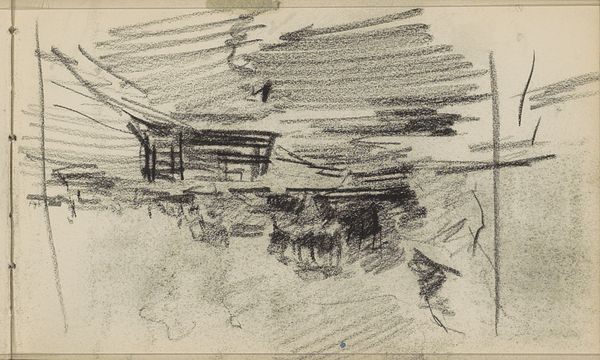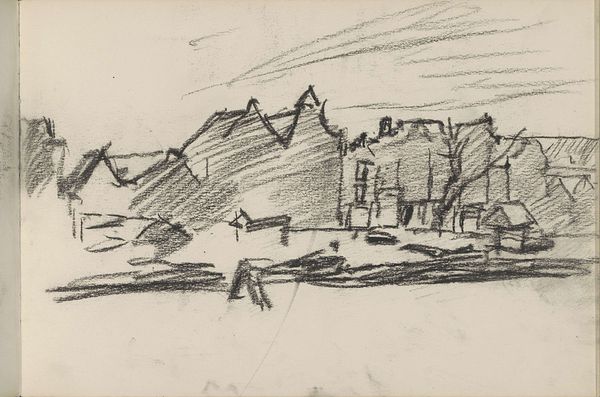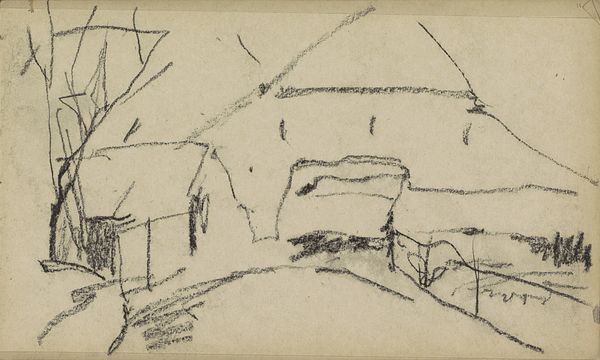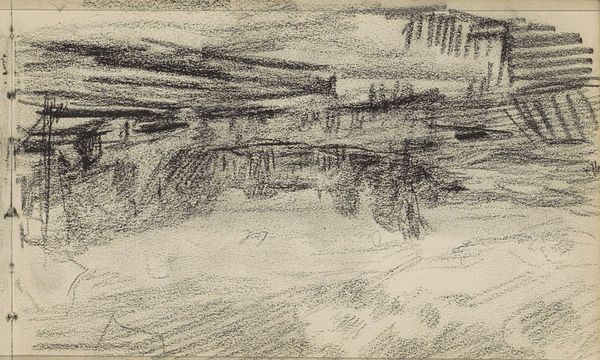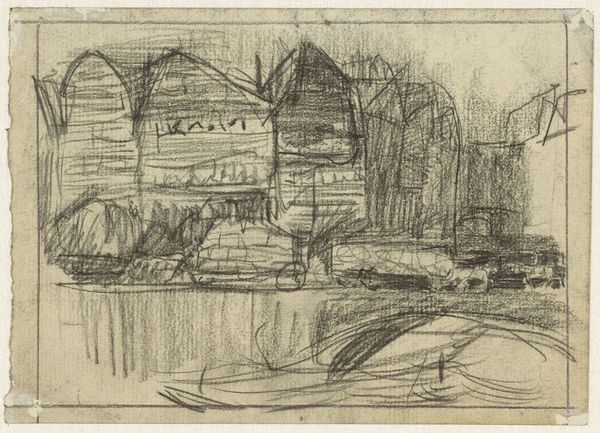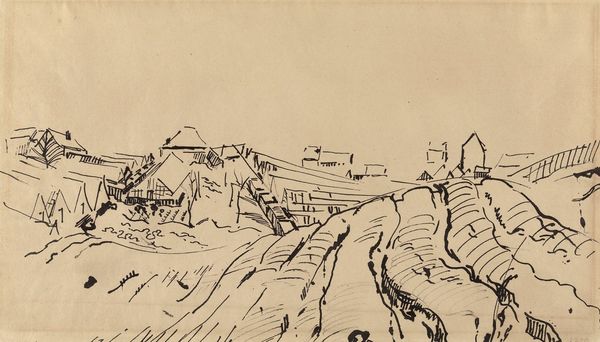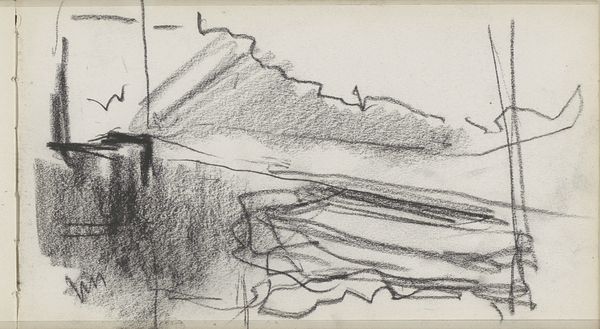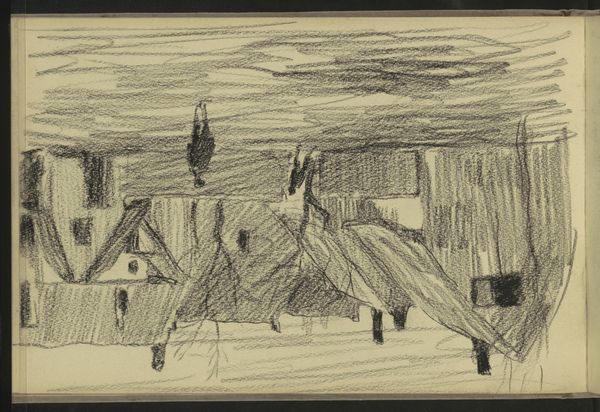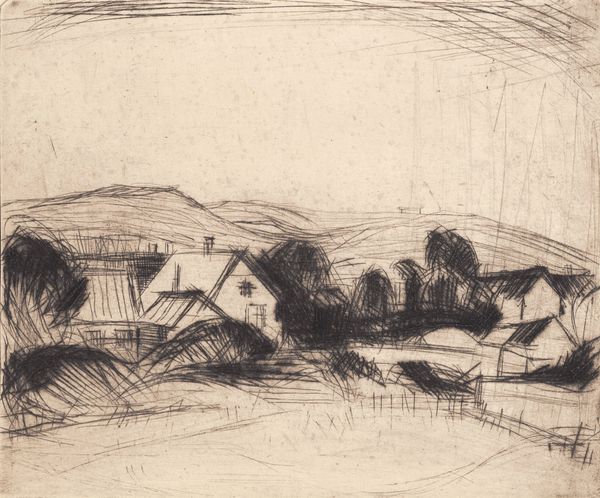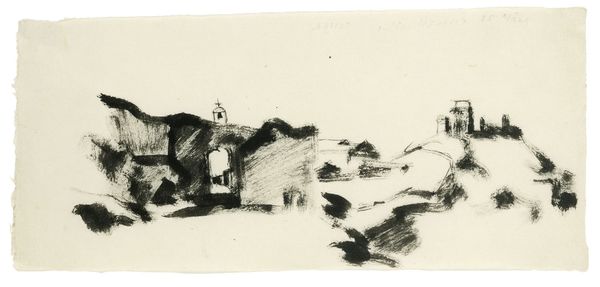
print, etching
# print
#
etching
#
landscape
#
expressionism
#
cityscape
#
monochrome
Dimensions: sheet: 21.5 × 28.5 cm (8 7/16 × 11 1/4 in.) plate: 16 × 19 cm (6 5/16 × 7 1/2 in.)
Copyright: National Gallery of Art: CC0 1.0
Editor: This is Walter Gramatté's "Barracks," created in 1916 using etching. The sharp, almost frantic lines give the cityscape an anxious quality. What do you make of this print? Curator: From a materialist perspective, the etching process is key. Consider the labor involved, the acid biting into the metal plate, the physical act of printing. Gramatté isn't just depicting a cityscape; he's engaging with the means of its production. The stark monochrome removes any color distractions, so what remains are lines of production, of the cityscape and the artwork itself. Notice how the composition emphasizes the harshness of the landscape leading up to the Kaserne and how these lines dominate much of the imagery, creating almost as much 'field' as is taken up by the city structures. Editor: So the process itself becomes part of the statement? The bleakness extends beyond the subject matter. Curator: Exactly. The medium informs the message. Think about the social context: 1916, the height of World War I. Barracks represent military power, but this etching presents them as stark, almost fragile, structures within a ravaged landscape. Editor: It’s a critique, perhaps, of the war machine? Curator: A strong argument could be made to read it that way, particularly when considering how the landscape and built structures have little differentiating line quality. Both are expressed by harsh angles, one indistinguishable from the other. How the city comes from, or returns to, the environment it sits on. Consider the role of the etching itself—its relative inexpensiveness allowed for wider dissemination, making potentially subversive ideas accessible. Editor: I never thought about the affordability influencing the message itself! Curator: It highlights the means of distribution and how materiality can affect social impact. Hopefully that gives some insights into how we can analyze art through a materialist lens.
Comments
No comments
Be the first to comment and join the conversation on the ultimate creative platform.
